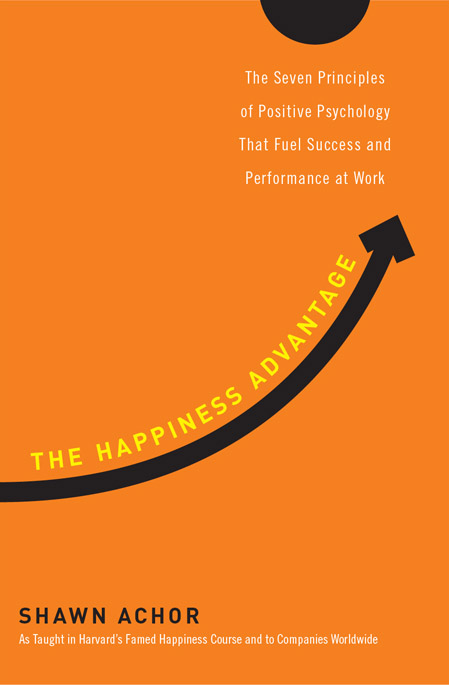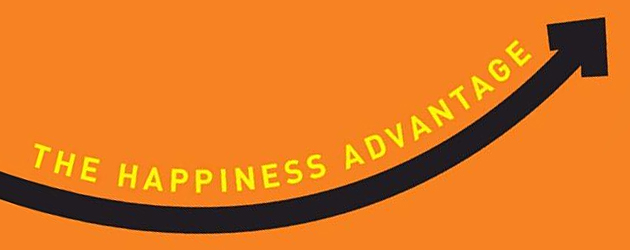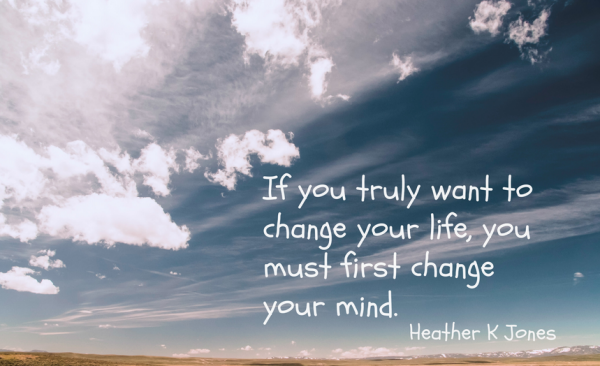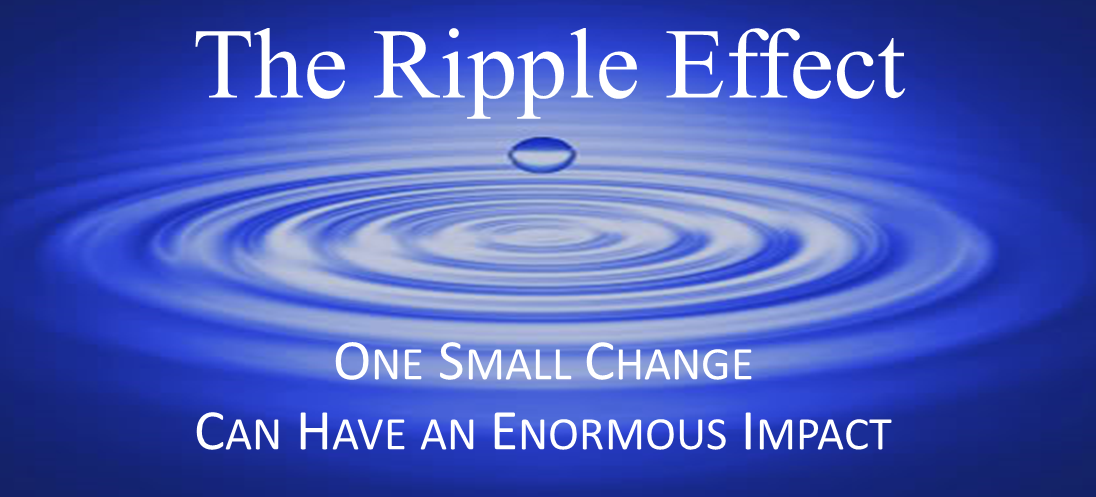From amazon.com:
Shawn Achor is the winner of over a dozen distinguished teaching awards at Harvard University, where he delivered lectures on positive psychology in the most popular class at Harvard. Today Shawn travels around the world giving talks on positive psychology to Fortune 500 companies, schools, and non-profit organizations. He has worked with doctors in California, executives in Hong Kong, teachers in South Africa, and bankers in Switzerland. Shawn graduated magna cum laude from Harvard and earned a Masters degree from Harvard Divinity School in Christian and Buddhist ethics. In 2006, he served as Head Teaching Fellow with Dr. Tal Ben-Shahar of “Positive Psychology,” a class that enrolled 1 out of every 7 Harvard undergraduates. For seven years, Shawn also served as an Officer of Harvard, living in Harvard Yard and counseling students through the stresses of their first year. Though he now travels extensively for his work with Aspirant, Shawn continues to conduct original psychology research on happiness and organizational achievement. 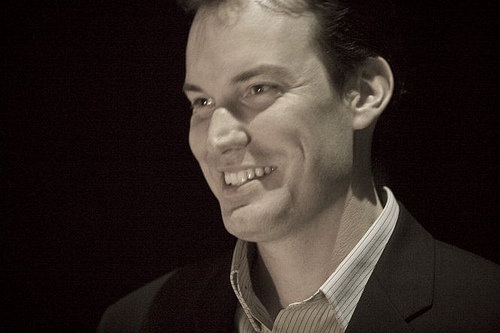
TOC
Part One: Positive Psychology at Work
- Introduction
- Discovering the Happiness Advantage
- The Happiness Advantage at Work
- Change is Possible
Part Two: Seven Priciples
- Principle #1: The Happiness Advantage
- Principle #2: The Fulcrum and The Lever
- Principle #3: The Tetris Effect
- Principle #4: Falling Up
- Principle #5: The Zorro Circle
- Principle #6: The 20-second Rule
- Principle #7: Social Investment
Part Three: The Ripple Effect
- Spreading The Happiness Advantage at Work, at Home, and Beyond
–
Short Summary
Part1 – Positive Psychology at Work
- we now know that happiness is the precursor to success, not merely the result. And that happiness and optimism actually fuel performance and achievement
- in 200 studies on 275,000 people worldwide: happiness leads to success in nearly every domain, including work, health, friendship, sociability, creativity, and energy.
Part 2: Seven Priciples
Principle #1: The Happiness Advantage
- When we are happy—when our mindset and mood are positive—we are smarter, more motivated, and thus more successful. Happiness is the center, and success revolves around it.
- Happiness boosters: meditation, looking forward to something, commit conscious acts of kindness, exercise, Spend money (but NOT on Stuff), exercise a Signature Strength, ..
Principle #2: The Fulcrum & The Lever
Changing your Peformance by changing your Mindset
- Happiness is not about lying to ourselves, or turning a blind eye to the negative, but about adjusting our brain so that we see the ways to rise above our circumstances.
- The mental construction of our daily activities, more than the activity itself, defines our reality.
- The heart of the challenge is to stop thinking of the world as fixed when reality is, in truth, relative.
Principle #3 – The Tetris Effect
Training Your Brain to Capitalize on Possibility
- Train your brain to scan the world for the opportunities and ideas that allow our success rate to grow.
- The best way to kick-start this is to start making a daily list of the good things in your job, your career, and your life.
Principle #4 – Falling Up
Capitalizing on the downs to build Upward Momentum
- Study after study shows that if we are able to conceive of a failure as an opportunity for growth, we are all the more likely to experience that growth
- It’s about using that downward momentum to propel ourselves in the opposite direction. It’s about capitalizing on setbacks and adversity to become even happier, even more motivated, and even more successful. It’s not falling down, it’s falling up.
Principle #5 – The Zorro Circle
How Limiting Your Focus to Small, Manageable Goals Can Expand Your Sphere of Power
- Feeling that we are in control, that we are masters of our own fate at work and at home, is one of the strongest drivers of both well-being and performance.
- Happiness, and health have less to do with how much control we actually have and more with how much control we think we have.
- No matter what you may have heard from motivational speakers, coaches, and the like, reaching for the stars is a recipe for failure.
- As Harvard Business School professor Peter Bregman advises, “Don’t write a book, write a page.
Principle #6 – The 20-Second Rule
How to Turn Bad Habits into Good Ones by minimizing Barriers to Change
- Common sense is not common action….
That’s why even though doctors know better than anyone the importance of exercise and diet, 44 percent of them are overweight. - Our willpower weakens the more we use it.
- The key to creating these habits is ritual, repeated practice, until the actions become ingrained in your brain’s neural chemistry. And the key to daily practice is to put your desired actions as close to the path of least resistance as humanly possible.
Priciple #7 – Social Investment
Why Social support is your single Greatest asset
- social relationships are the single greatest investment you can make in the Happiness Advantage.
3. The Ripple effect
- Each one of us is like that butterfly (re: the butterfly effect). And each tiny move towards a more positive mindset can send ripples of positivity through our organizations, our families, and our communities.
- Emotions are highly contagious… both negative emotions & positive emotions
His classic ted-talk:
–
Also check out:
- Strategies on How to Read and Learn From Books
- Great Book: “The Miracle Morning” by Hal Elrod – A 23-min Summary
- Great Tools to Boost Your Personal Productivity & Be Creative
- Decide: Work Smarter, Reduce Your Stress, and Lead by Example by Steve McClatchy – A 27-min Summary
- Big Magic: Creative Living Beyond Fear by Elizabeth Gilbert – A 27-min Summary
–
Quotes from the book:
Part One: Positive Psychology at Work: Introduction
Thanks to this cutting-edge science, we now know that happiness is the precursor to success, not merely the result. And that happiness and optimism actually fuel performance and achievement—giving us the competitive edge that I call the Happiness Advantage.
Discovering the Happiness Advantage
It turns out that our brains are literally hardwired to perform at their best not when they are negative or even neutral, but when they are positive.
The Happiness Advantage at Work
200 studies on 275,000 people worldwide. Their findings exactly matched the principles I was teaching—that happiness leads to success in nearly every domain, including work, health, friendship, sociability, creativity, and energy.
Part Two: Seven Priciples
Principle #1: The Happiness Advantage
When we are happy—when our mindset and mood are positive—we are smarter, more motivated, and thus more successful. Happiness is the center, and success revolves around it
For me, happiness is the joy we feel striving after our potential. The chief engine of happiness is positive emotions, since happiness is, above all else, a feeling.
This reveals something important about the Happiness Advantage in action: Even the smallest shots of positivity can give someone a serious competitive edge.
Everyone has one or two quick activities they know will make them smile, and however trivial they may feel, their benefits are worth it.
Happiness boosters:
- Meditation
Meditation takes practice, but it’s one of the most powerful happiness interventions
- Find something to look forward to
put something in the calendar – even if it’s a month or a year down the road. Then whenever you need a boost of happiness, remind yourself about it.
Anticipating future rewards can actually light up the pleasure centers in your brain much as the actual reward will.
- Commit Conscious Acts of Kindness
- Infuse positivity into your surrondings
The smartest bosses encourage employees to get a breath of fresh air at least once a day
- Exercise
physical activity can boost mood and enhance our work performance in a number of ways.. by improving motivation and feeling of mastery, reducing stress & anxiety, and helping us get into flow
In short, physical activity is not just an incredible powerful mood lifter, but a long-lasting one
- Spend money (but NOT on Stuff)
money CAN buy happiness, but only if used to DO things as opposed to simply HAVE things
- Exercise a Signature Strength
Find your signature strengths and exercise them as often as possible - Leading with the Happiness Advantage
The best leaders use the Happiness Advantage as a tool to motivate their teams and maximize employee potential.
Principle #2: The Fulcrum & The Lever
Changing your Peformance by changing your Mindset
Happiness is not about lying to ourselves, or turning a blind eye to the negative, but about adjusting our brain so that we see the ways to rise above our circumstances.
- Move the Fulcrum, Change Reality
Relativity doesn’t end with mere physics (ref. Einstein). Every second of our own experience has to be measured through a relative & subjective brain. In other words, “reality” is merely our brain’s relative understanding of the world based on where and how we are observing it. Most important, we can change this perspective at any moment, and by doing so change our experience of the world around us. This is what I mean by moving our fulcrum
The mental construction of our daily activities, more than the activity itself, defines our reality.
- The Lever of Posibility
The more you believe in your own ability to succeed, the more likely it is that you will
Years of research has shown that a specific and concerted focus on your strengths during a difficult task produces the best results
- Leveraging Intelligence
More important still than believing in your own abilities is believing that you can IMPROVE these abilities
Beliefs are so powerful because they dictate our efforts and actions.
This is why Sonja Lyubomirsky, a leader in the scientific study of well-being, has written that she prefers the phrase “creation or construction of happiness” to the more popular “pursuit,” since “research shows that it’s in our power to fashion it for ourselves.”
- We aren’t saving dolphins
And I have worked with entrepreneurs who have built $100 million companies who view their job as soul-draining. You can have the best job in the world, but if you can’t find the meaning in it, you won’t enjoy it, whether you are a movie maker or an NFL playmaker.
- Changing the fulcrum & Lever of those around you
that the best managers and leaders view each interaction as an opportunity to prime their employees for excellence.
- The Pygmalion effect
This phenomenon is called the Pygmalion Effect: when our belief in another person’s potential brings that potential to life.
- Motivating a team with the Pygmalion effect
Every Monday, ask yourself these three questions: (1) Do I believe that the intelligence and skills of my employees are not fixed, but can be improved with effort?; (2) Do I believe that my employees want to make that effort, just as they want to find meaning and fulfillment in their jobs?; and (3) How am I conveying these beliefs in my daily words and actions?
The heart of the challenge is to stop thinking of the world as fixed when reality is, in truth, relative.
Principle #3 – The Tetris Effect
Training Your Brain to Capitalize on Possibility
- The tetris effect @ Work
Everyone knows someone stuck in some version of the Tetris Effect—someone who is unable to break a pattern of thinking or behaving.
–
And worse, the better we get at scanning for the negative, the more we miss out on the positive—those things in life that bring us greater happiness, and in turn fuel our success.
–
The good news is that we can also train our brains to scan for the positive—for the possibilities dormant in every situation—and become experts at capitalizing on the Happiness Advantage.
–
Constantly scanning the world for the negative comes with a great cost. It undercuts our creativity, raises our stress levels, and lowers our motivation and ability to accomplish goals.
- Gorillas & Priuses
This selective perception is also why when we are looking for something, we see it everywhere.
–On the other hand, imagine a way of seeing that constantly picked up on the positives in every situation. That’s the goal of a Positive Tetris Effect: Instead of creating a cognitive pattern that looks for negatives and blocks success, it trains our brains to scan the world for the opportunities and ideas that allow our success rate to grow.
–
- Getting stuck in a positive tetris effect
The best way to kick-start this is to start making a daily list of the good things in your job, your career, and your life.
- Practice, Practice, Practice
Since the best way to ensure follow-through on a desired activity is to make it a habit (more about this in Principle 6), the key here is to ritualize the task.
Principle #4 FALLING UP
Capitalizing on the downs to build Upward Momentum
Study after study shows that if we are able to conceive of a failure as an opportunity for growth, we are all the more likely to experience that growth
- “Eureka, We failed!”
“things do not necessarily happen for the best, but some people are able to make the best out of things that happen.”
Here is the crucial part: Both the counterfacts are completely hypothetical. Because it’s invented, we actually have the power in any given situation to consciously select a counterfact that makes us feel fortunate rather than helpless. And choosing a positive counterfact, besides simply making us feel better, sets ourselves up for the whole host of benefits to motivation and performance we now know accompanies a positive mindset.
–Daniel Gilbert, author of Stumbling on Happiness, has performed a number of studies showing immune neglect in action.
–Just knowing this quirk of human psychology—that our fear of consequences is always worse than the consequences themselves—can help us move toward a more optimistic interpretation of the downs we will inevitably face.
–Success is about more than simple resilience. It’s about using that downward momentum to propel ourselves in the opposite direction. It’s about capitalizing on setbacks and adversity to become even happier, even more motivated, and even more successful. It’s not falling down, it’s falling up.
–
Principle #5 – The Zorro Circle
How Limiting Your Focus to Small, Manageable Goals Can Expand Your Sphere of Power
Feeling that we are in control, that we are masters of our own fate at work and at home, is one of the strongest drivers of both well-being and performance.
==========Interestingly, psychologists have found that these kinds of gains in productivity, happiness, and health have less to do with how much control we actually have and more with how much control we think we have.
==========In one incredible study, researchers found that when they gave a group of nursing home residents more control over simple tasks in their daily lives—like putting them in charge of their own house plants—not only did their levels of happiness improve, but their mortality rate actually dropped in half.
==========
- Losing Control: The Dueling Brain
When that happens, the Jerk overpowers the Thinker’s defenses, spurring us into action without conscious thought. Instead of “think, then react,” the Jerk responds with “fight or flight.” We have become victims of what scientists call “emotional hijacking.”
==========
- You can’t Sprint your way to a Marathon
No matter what you may have heard from motivational speakers, coaches, and the like, reaching for the stars is a recipe for failure.
–That’s why psychologists who specialize in goal-setting theory advocate setting goals of moderate difficulty—not so easy that we don’t have to try, but not so difficult that we get discouraged and give up.
–As Harvard Business School professor Peter Bregman advises, “Don’t write a book, write a page. …
–The point: Small successes can add up to major achievements. All it takes is drawing that first circle in the sand.
–
Principle #6 – The 20-Second Rule
How to Turn Bad Habits into Good Ones by minimizing Barriers to Change
- Common sense is not common action
That’s why even though doctors know better than anyone the importance of exercise and diet, 44 percent of them are overweight.
–Habits are like financial capital—forming one today is an investment that will automatically give out returns for years to come.
–That means that we have the power to create new habits and then reap the benefits whether we’re 22 or 72.
–
- Willpower gets a workout
Because the students who had to use every ounce of their willpower to avoid eating the enticing chocolate chip cookies didn’t have the willpower or mental energy left to struggle with a complex puzzle—even though avoiding cookies and persisting on a puzzle are seemingly completely unrelated.
–Put another way, our willpower weakens the more we use it.
–
- The path of least resistance
In general, Americans actually find free time more difficult to enjoy than work.
–The answer is that we are drawn—powerfully, magnetically—to those things that are easy, convenient, and habitual, and it is incredibly difficult to overcome this inertia.
–
- Redirecting the path – the 20s rule
the strategy itself is universally applicable: Lower the activation energy for habits you want to adopt, and raise it for habits you want to avoid. The more we can lower or even eliminate the activation energy for our desired actions, the more we enhance our ability to jump-start positive change.
–Our best weapon in the battle against bad habits—be they Slurpees, Seinfeld reruns, or distractions at work—is simply to make it harder for ourselves to succumb to them.
–
- Sleep in your gym clothes
Their studies showed that with every additional choice people are asked to make, their physical stamina, ability to perform numerical calculations, persistence in the face of failure, and overall focus drop dramatically. And these don’t have to be difficult decisions either—the questions are more “chocolate or vanilla?”
–The less energy it takes to kick-start a positive habit, the more likely that habit will stick.
–The key to creating these habits is ritual, repeated practice, until the actions become ingrained in your brain’s neural chemistry. And the key to daily practice is to put your desired actions as close to the path of least resistance as humanly possible.
–
Priciple #7 – Social Investment
Why Social support is your single Greatest asset
social relationships are the single greatest investment you can make in the Happiness Advantage.
–Turns out, there was one—and only one—characteristic that distinguished the happiest 10 percent from everybody else: the strength of their social relationships.
–The point is, the more social support you have, the happier you are. And as we know, the happier you are, the more advantages you accrue in nearly every domain of life.
–
- The Vertical Couple
seems a bad relationship with your boss can be as bad for you as a steady diet of fried foods—and not nearly as much fun.
–Of all the social ties we have at work, the boss/employee relationship, what Daniel Goleman has cleverly termed a “vertical couple,” is the single most important social bond you can cultivate at work.
–The best leaders already know this, and they go out of their way to make employees feel cared for.
–—
So even though our basic instincts might tell us to turn inward, positive psychology knows better. When caught in a fire, holding on to others is the best chance we have for successfully finding our way out of the maze.
–
3. The Ripple effect
Once we start capitalizing on the Happiness Advantage in our own lifes, the positive changes quickly ripple out. This is why positive psychology is so powerful.
“like secondhand smoke, the leakage of emotions can make a bystander an innocent casualty of someone’s else’s toxic state”
–Daniel GoldmanLuckily, positive emotions are also contagious, which makes them a powerful tool in our quest for high performance in the workplace
So the happier everyone is around you, the happier you will become
One way to build rapport, and therefor extend influence, is with eye contact. Studies show that rapport strengthens between two people when they lock eyes..
Each one of us is like that butterfly (re: the butterfly effect). And each tiny move towards a more positive mindset can send ripples of positivity through our organizations, our families, and our communities.
-Egil
